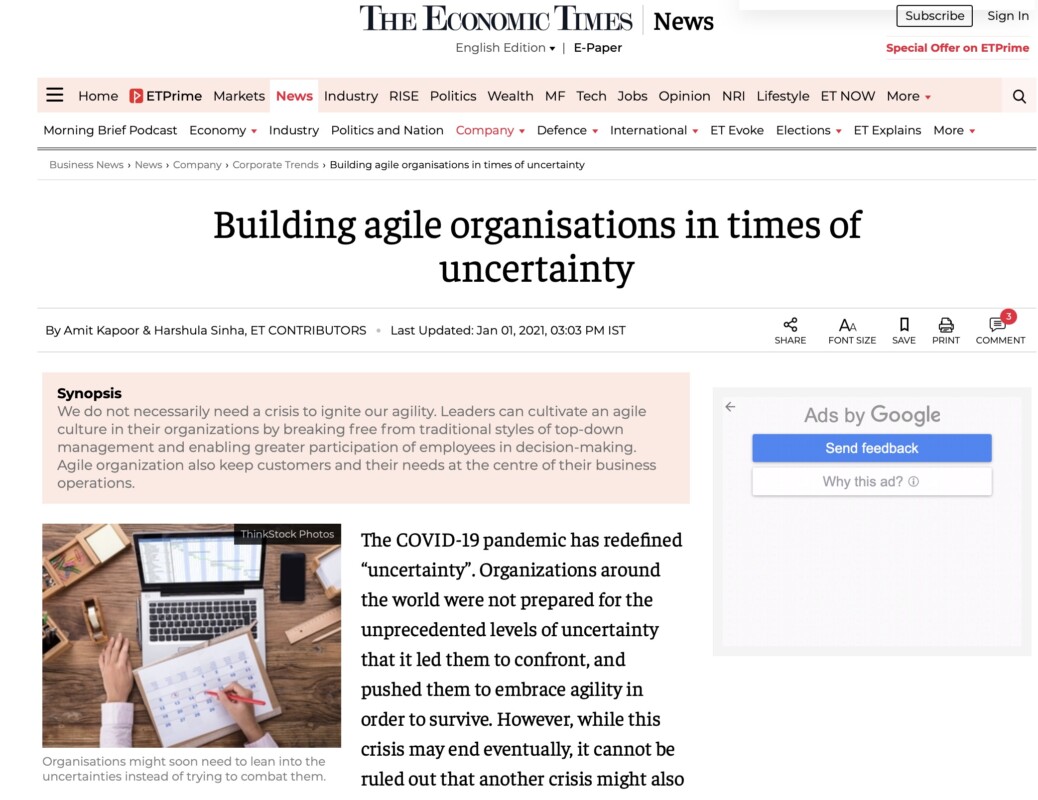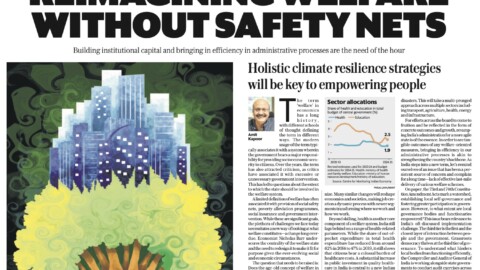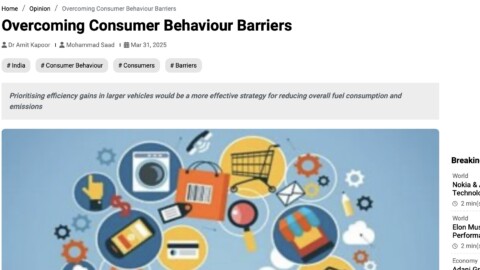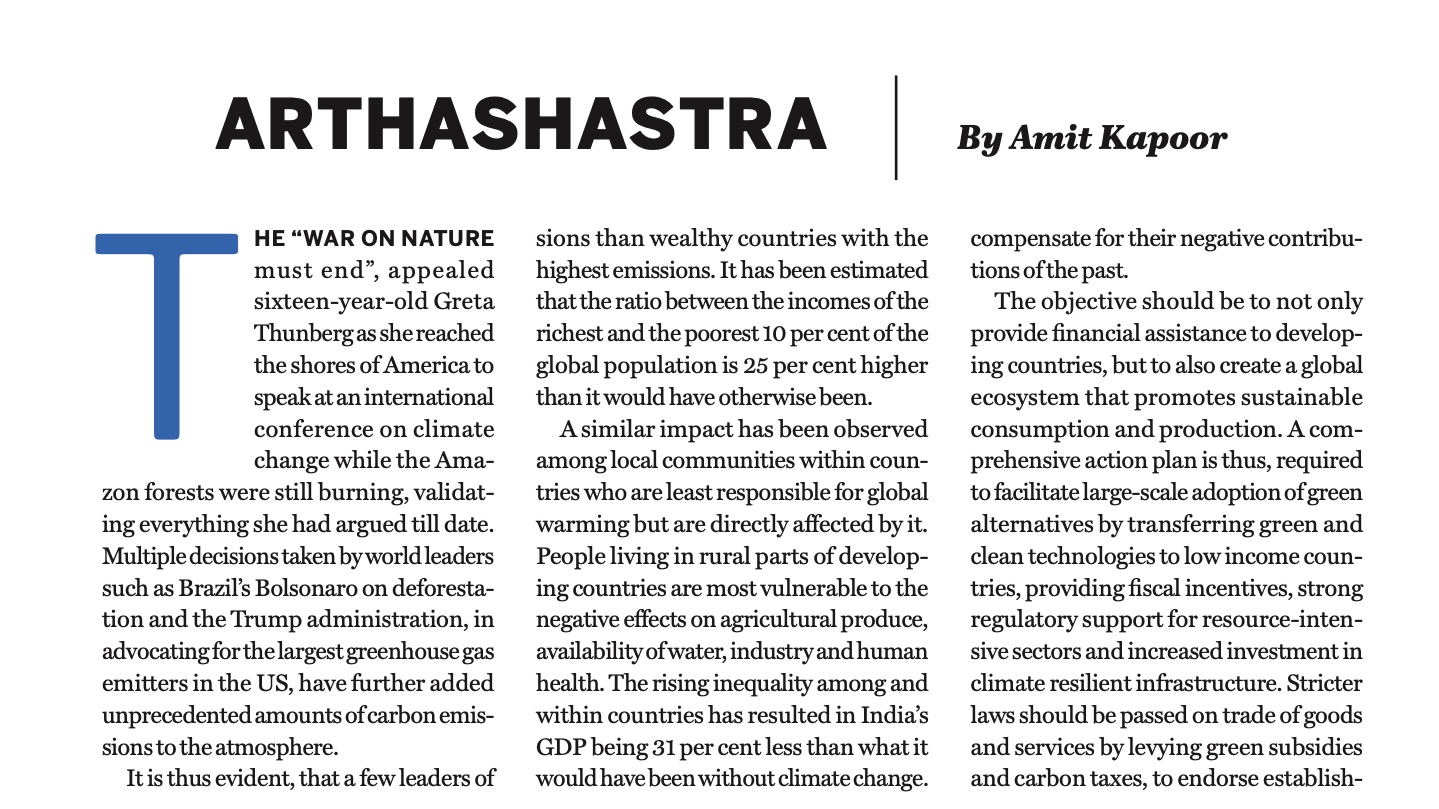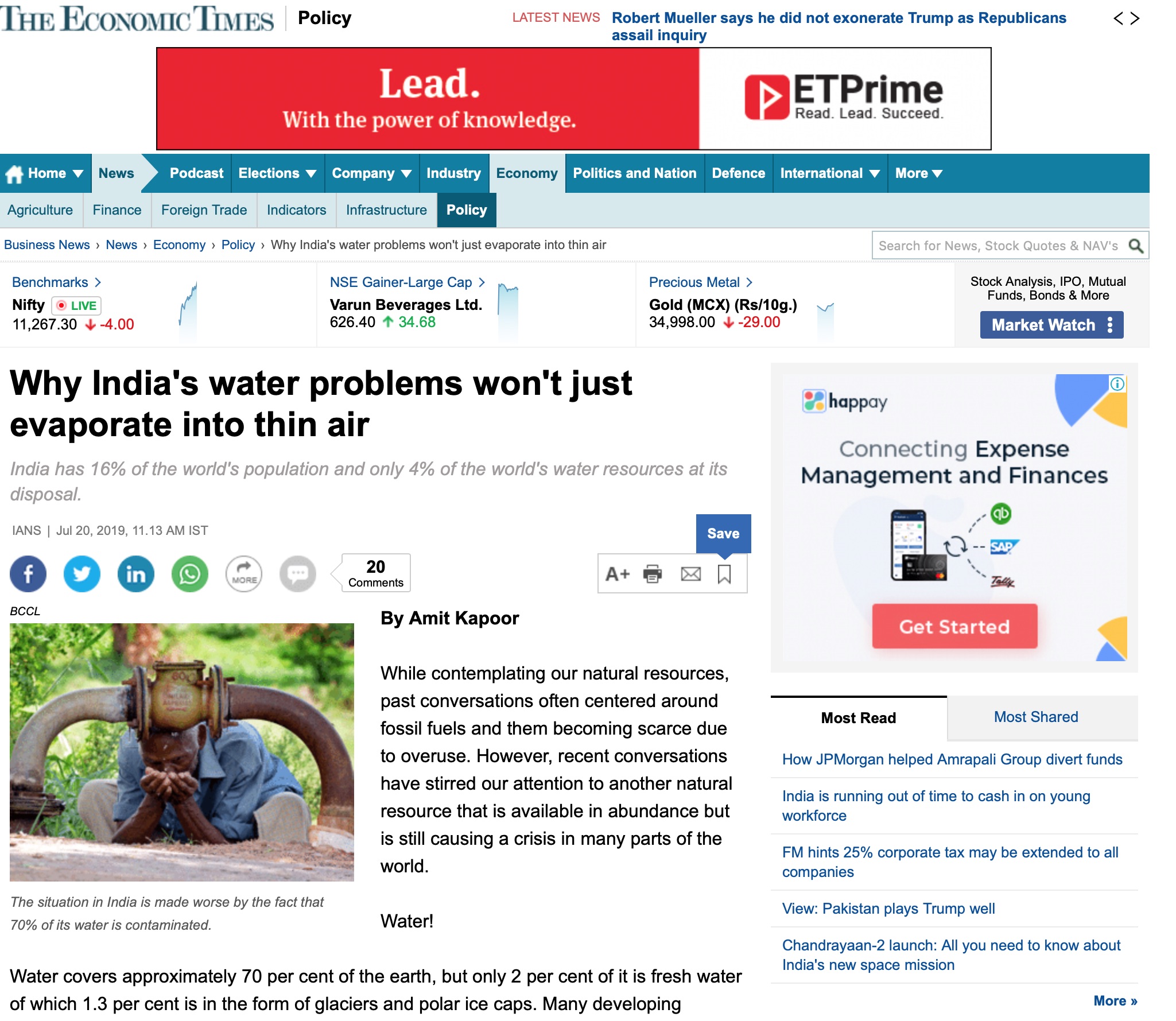Building agile organisations in times of uncertainty
The COVID-19 pandemic has redefined “uncertainty”. Organizations around the world were not prepared for the unprecedented levels of uncertainty that it led them to confront, and pushed them to embrace agility in order to survive. However, while this crisis may end eventually, it cannot be ruled out that another crisis might also be looming in the horizon¾ health-related or otherwise. Organizations may have reoriented their operations to respond to this crisis, but they cannot go back to normal when it ends.
The pandemic has spurred a paradigm shift, and changed the way we interact with our surroundings, influenced customer needs, consumption habits, and more. Hence, it is time to let go of traditional ways of working and build agile organizations. Organizations that foster agile culture can seamlessly adapt to the changing market needs. Agility involves practices, values and behaviour that enable the business to become more resilient, flexible and innovative, especially in the face of uncertainty.
Even before the health crisis, the markets being constantly disrupted by innovation were already marked with uncertainty. The explosion of newer technologies and their market penetration also moulded consumer demands in such a way that customers now prefer platforms that can provide them with products and services the fastest. Services at the touch of a button are becoming more commonplace because of Internet of Things (IoT). Thus, even beyond this crisis, it is critical for organizations to be agile enough to adapt to the changing consumer demands, and serve them as efficiently as possible if they want to compete in the market.
We do not necessarily need a crisis to ignite our agility. Leaders can cultivate an agile culture in their organizations by breaking free from traditional styles of top-down management and enabling greater participation of employees in decision-making. Agile organization also keep customers and their needs at the centre of their business operations, as customers today are better informed and know what they want and where they want it.
IoT has not only transformed consumer behaviour but has also served as a tool for organizations to adapt to the same and in fact, improve their competitiveness. The leading white goods manufacturer in the world, the China-based Haier Group can serve as a blueprint for organizations seeking to build agility in their operations. In the midst of the pandemic that brought all businesses to a halt, Haier fulfilled 99.8% of orders throughout February, with 60% of products manufactured in local factories overseas. As of February 25, Haier’s domestic factories had returned to full capacity. At the core of their success lies their Rendanheyi business model, which allowed them to adjust their operations across the board in limited time.
In Rendanheyi, “Ren” stands for employees or people, “Dan” is user needs, and “Heyi” means integrating employees and user needs. To put it simply, Rendanheyi means that each employee should directly face users, create user value, and realize their own shared value by creating value for users. Haier brings this idea to life through its principles of zero distance and decentralisation.
CEO Zhang Ruimin, who first proposed the Rendanheyi model in 2005, recognizes IoT as the next major economic phenomena after mobile internet. IoT creates new data sources, allowing companies to better understand consumer needs and choices, and offer them personalised services. Haier leverages IoT to create “zero distance” with consumers. It means constant engagement with customers to sense consumer behaviour and needs, and co-create solutions. By being so close to customers as to sense their demands and deliver on it, the Rendanheyi model aims to gain lifelong users.
Customer-centric businesses are the future of markets, and it is predicted that the competitiveness of companies in the near future will be determined by its number of lifelong users. With an increasing pool of lifelong users, organizations get more and more opportunities to tap into their customers’ needs and meet those needs. In doing so, the organizations are constantly challenged to innovate solutions and continuously reorient their operations. Thus, zero distance with customers is central to creating an agile organization
The second important link in the Rendanheyi model is the employee. An organization in the Rendanheyi model is able to meet the needs of the customers because the employees are not restricted by the bureaucratic model of management. Employees do not merely follow the orders of their superiors, but are their own boss. Their existence is tied to the users and how they create value for the users, which entails that even their salary is determined by user evaluation and is paid by users. This employee-customer relationship exists because of the network of micro-enterprises that is in place.
Instead of the traditional pyramid-like organizational structure, Haier is comprised of a network of micro-enterprises (MEs) with employees as the entrepreneurs. Its essence is perfectly summed up by CEO Ruimin: “We replaced the bureaucratic model with a model based on self-employment, self-motivation, and self-organization. Our goal is to let everyone become their own CEO.” Thus, the model replaces the middle management with small entrepreneurs who create value for users and turn them into lifelong users. Without bureaucratic hurdles, the entrepreneurs are able adjust their operations and make decisions efficiently.
Staying true to its nature of self-disruption, the Rendanheyi model is constantly evolving with time. The decentralised model began with the creation of self-managing teams called zi zhu jing ying ti (or ZZJYTs), which then evolved into communities of interest (COIs) and later to MEs, as it continued to address challenges faced at each level. Today, having recognized the shift in consumer focus from isolated products to integrated solutions for smart lifestyles, Haier has moved on to a new organizational format called the ecosystem micro-communities (EMCs), a community of MEs that address these user needs. The ecosystem is also open to external stakeholders joining it to co-create more advanced solutions.
In this way, Rendanheyi model’s agility allows it to lean into the uncertainties instead of trying to combat them, and to continually reinvent itself. With societies and economies completely shifting gears, the pandemic has started off a chain effect of changes in all aspects of life, thus signalling even more uncertainties in the markets in the near future. Hence, it is time for businesses to revisit and rewire their organizational model to become agile and responsive to uncertainty.
The article was published with Economic Times on January 1, 2021.
